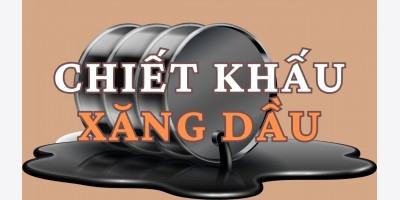Giá dầu thô vượt mức 105 USD/thùng
Phiên châu Á sáng nay giá dầu tiếp tục duy trì Ä‘à tăng kể từ phiên Mỹ cuối tuần do giá»›i đầu tÆ° gia tăng quan ngại vá» tình hình bất ổn chính trị ở Libya sẽ gây gián Ä‘oạn nguồn cung, cùng vá»›i Ä‘ó là ná»n kinh tế Mỹ cho thấy những tín hiệu lạc quan sẽ há»— trợ cho nhu cầu nhiên liệu tăng trong thá»i gian tá»›i.
Hôm qua, cuá»™c chiến giữa quân Ä‘á»™i trung thành của tổng thống Muammar Qaddafi và những ngÆ°á»i biểu tình Ä‘ã diá»…n ra và kéo dài từ vùng sản xuất dầu ở phía tây cho đến quê hÆ°Æ¡ng của nhà lãnh đạo này ở thành phố Sirte.
Ben Westmore, chuyên gia kinh tế-năng lượng và khoáng sản của Ngân hàng National Australia Bank Ltd ở Melbourne nói, không chỉ căng thẳng xung Ä‘á»™t ở quốc gia sản xuất dầu ở Bắc Phi mà còn là diá»…n biến phức tạp ở Trung Äông khiến nguồn cung dầu thô bị Ä‘e dá»a. Song song Ä‘ó là thông tin khởi sắc từ ná»n kinh tế Mỹ nhÆ° bảng lÆ°Æ¡ng phi nông nghiệp cho thấy thị trÆ°á»ng lao Ä‘á»™ng Ä‘ang có những tín hiệu cải thiện Ä‘áng mừng.
Theo báo cáo từ Bá»™ lao Ä‘á»™ng Mỹ, trong tháng 02 vừa qua, số ngÆ°á»i bị thất nghiệp tăng 192.000 ngÆ°á»i, hầu hết ở các lÄ©nh vá»±c nhÆ° sản xuất, xây dá»±ng và những tổ chức há»— trợ tạm thá»i, thấp hÆ¡n so vá»›i mức dá»± báo của các chuyên gia kinh tế do Bloomberg News khảo sát là 196.000 ngÆ°á»i. Äồng thá»i tỉ lệ thất nghiệp cÅ©ng giảm xuống mức 8,9%, mức thấp nhất kể từ tháng 04/2009, cÅ©ng thấp hÆ¡n mức dá»± báo của các chuyên gia kinh tế là Ä‘iá»u chỉnh lên 9,1%.
Giá dầu thô WTI giao kỳ hạn tháng 04 vào lúc 8h15 sáng nay (giá» Việt Nam) Ä‘ang ở mức 105,27 USD/thùng, Ä‘ây là mức cao nhất kể từ ngày 26/09/2008. Kết thúc phiên giao dịch tuần qua, gia dầu tăng 6,7% so vá»›i tuần trÆ°á»›c Ä‘ó, và cÅ©ng là tuần tăng giá thứ ba liên tiếp.
Theo khảo sát của CÆ¡ quan năng lượng quốc tế IEA, cuá»™c ná»™i chiến ở Libya Ä‘ã gây giảm sản lượng 1 triệu thùng của nÆ°á»›c này.
Ông Westmore cÅ©ng nói thêm rằng, các lá»i kêu gá»i phản đối chính phủ ở Ả Ráºp Saudi khiến chúng tôi lo ngại sẽ gây áp lá»±c lên thị trÆ°á»ng năng lượng sau khi chính phủ Tunisia và Ai Cáºp bị láºt đổ.
HÆ¡n nữa, diá»…n biá»…n thị trÆ°á»ng năng lượng có thể còn căng thẳng hÆ¡n nữa khi mà nhu cầu ở các ná»n kinh tế phát triển trên thế giá»›i tăng mạnh.
Trong Ä‘ó, giá xăng giao kỳ hạn tháng 04 Ä‘ã tăng 1 cent, tÆ°Æ¡ng Ä‘Æ°Æ¡ng 0,3% lên mức 3,0563 USD/galon. CÅ©ng trong tuần qua, giá xăng Ä‘ã tăng 11%.
Oil Gains a Second Day on Middle East Supply Risk, U.S. Economy
March 7 (Bloomberg) -- Oil gained a second day, rising above $105 a barrel in New York, as unrest in Libya renewed concern supply disruptions may spread while signs of U.S. economic recovery stoked speculation fuel demand will rise.
Futures rose as much as 1 percent after fighting between Libyan rebels and troops loyal to Muammar Qaddafi intensified as the opposition advanced west from the oil hub of Ras Lanuf yesterday toward the leader’s hometown of Sirte. Prices closed at the highest since September 2008 on March 4 after a U.S. government report showed the nation’s jobless rate fell to 8.9 percent in February, the lowest since April 2009.
“It’s still very much a Middle Eastern story,” said Ben Westmore, a minerals and energy economist at National Australia Bank Ltd. in Melbourne. “The market was pretty pleased with the U.S. non-farm payroll numbers, which shows some improvement in the labor market.”
Crude for April delivery gained as much as $1.02 to $105.44 a barrel in electronic trading on the New York Mercantile Exchange, and was at $105.24 at 11:14 a.m. in Sydney. The contract added $2.51 to $104.42 on March 4, the highest since Sept. 26, 2008. Futures increased 6.7 percent last week, the third straight advance.
Brent crude for April settlement gained 56 cents, or 0.5 percent, to $116.53 a barrel on the London-based ICE Futures Europe exchange. The contract rose $1.18, or 1 percent, to $115.97 on March 4. The contract gained 3.4 percent last week, the sixth straight weekly increase.
Saudi Arabia
Violence in Libya has cut output in the North African country by as much as 1 million barrels a day, according to the International Energy Agency. Libya pumped 1.59 million barrels a day in January, Bloomberg News estimates show.
Demonstrations have toppled leaders in Tunisia and Egypt, while there have been protests in countries including Iran, Yemen and Oman. In Saudi Arabia, the biggest oil producer in the Organization of Petroleum Exporting Countries, websites have called for a nationwide “Day of Rage” on March 11 and March 20, according to Human Rights Watch.
“We’re hearing increasing calls for protest in Saudi Arabia, which is the big, great threat hanging over the oil market at the moment,” National Australia Bank’s Westmore said. “You couple the supply risks in the Middle East with some more positive demand data from the developed world and it’s not surprising that you see the oil price push higher.”
U.S. Economy
The turmoil in the Middle East also pushed oil products prices higher. Gasoline for April delivery gained 1 cent, or 0.3 percent, to $3.0563 a gallon on the New York Mercantile Exchange. Prompt prices advanced 11 percent last week.
U.S. payrolls rose 192,000 in February compared with the 196,000 median estimate of economists surveyed by Bloomberg News, Labor Department figures showed March 4. Employment climbed in manufacturing, construction and temporary help agencies, while state and local government payrolls fell.
The unemployment rate was forecast to increase to 9.1 percent, according to the median of responses in a Bloomberg News survey of economists. The U.S. is the biggest oil-consuming country, responsible for 22 percent of global demand in 2009, according to BP Plc, which publishes its BP Statistical Review of World Energy each June.









